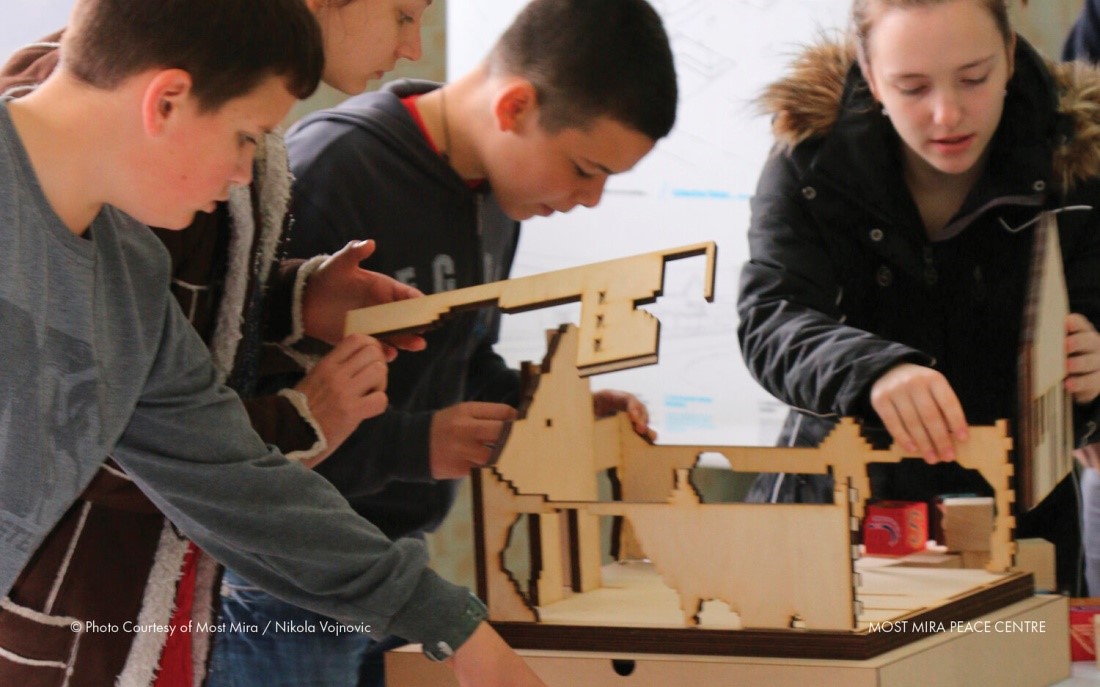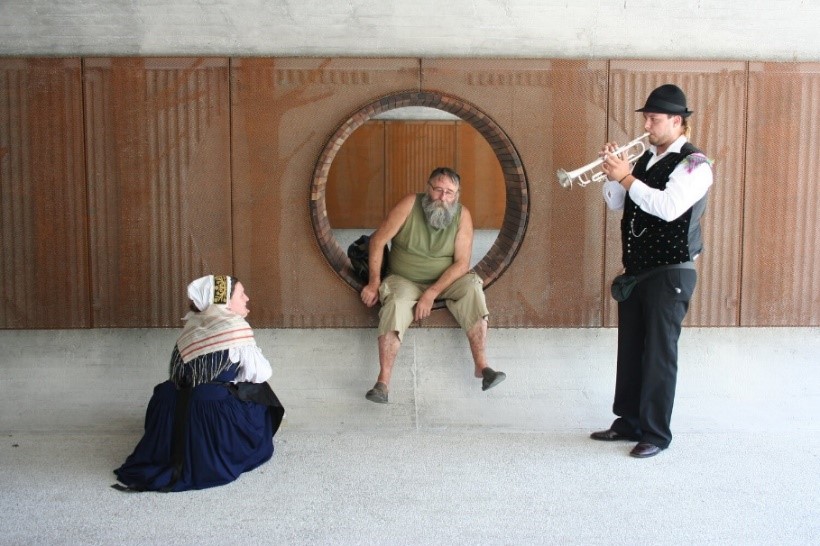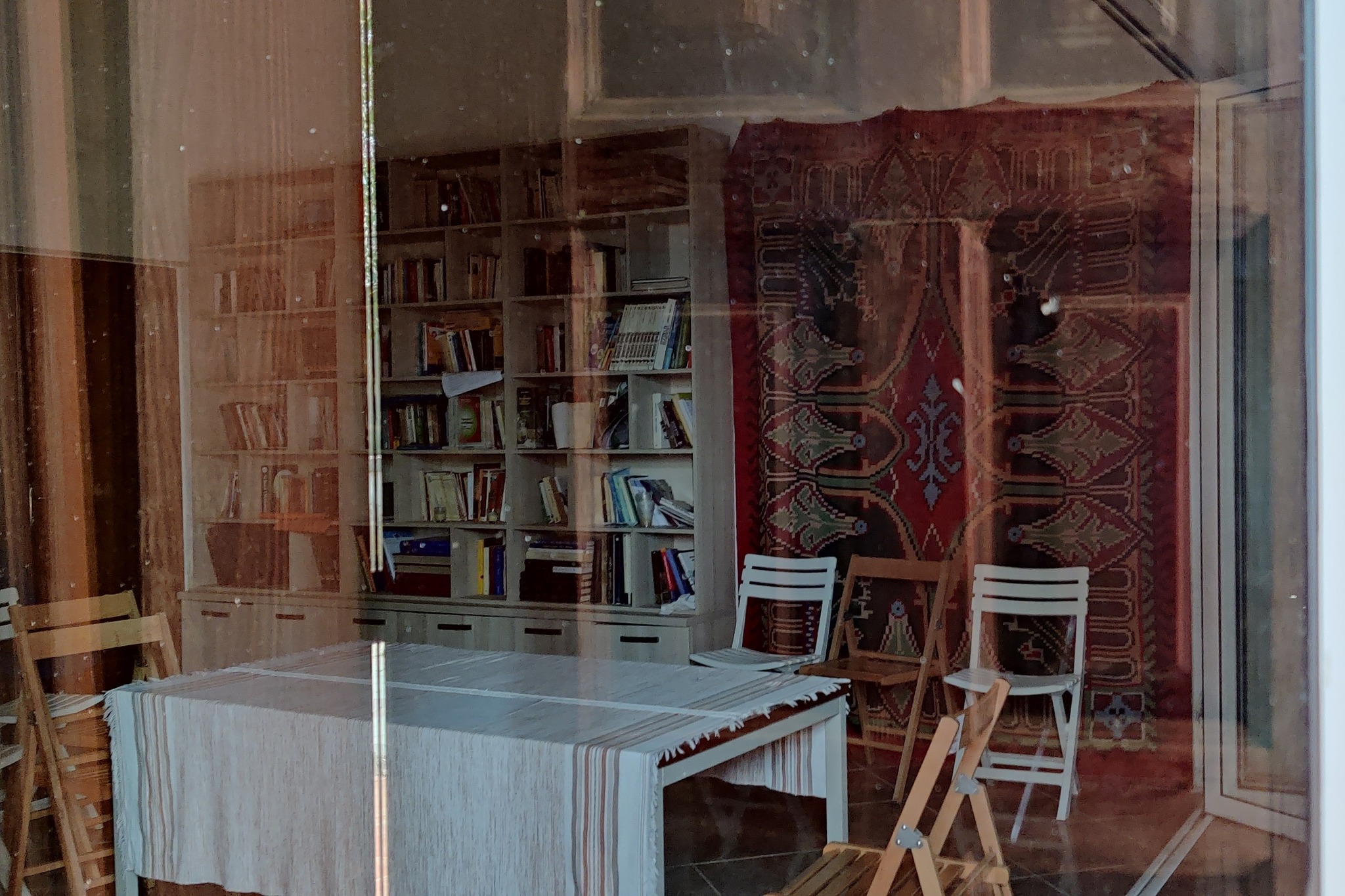Most Mira (Bridge of Peace) is NGO established in Bosnia and Herzegovina and UK, working on promotion of reconciliation and peace-building in the Prijedor area of Republika Srpska, Bosnia and Herzegovina. It was launched in Prijedor (BiH) in 2008 as an initiative of a survivor of a former concentration camp from 1990s, who spent years in UK for recovery and came back to the area in order to support and promote a peace and reconciliation among youth in Prijedor and the surrounding areas of Republika Srpska (north-west of Bosnia and Herzegovina). Although not from an arts background himself, Pervanic saw that the arts provided a safe, common and neutral space for people from all sides to come together, to push boundaries and create something unrelated to conflict.
Work of Most Mira addresses to:
- Ethnic segregation of young people;
- Lack of safe spaces for young people;
- Lack of opportunities for young people.
For more than 10 years, Most Mira has organised youth arts festivals, theatre workshops, peace building visits and tours and architectural workshops, engaging young persons of different ethnic roots, as well as their teachers and parents. The project gives young people the chance to form new and lasting friendships against ethnic and religious separation, and to support and develop their confidence to become leaders in their local communities. Most Mira also collaborates with a number of prestigious organisations through this project, including with the Arts and Humanities Research Council for our project Picturing Climate, culminating with an exhibition at the Tate Modern – London. The intention of the organization is to grow and diversify our range of creative and inclusive activities for young people and establish a permanent hub in Kevljani village near Prijedor.
Besides the fact Most Mira is in first place focused on making connections and overcoming all prejudices between youth from deeply divided communities, who share terrible memories from the recent past, its activities and projects gave new perspectives and opportunities for rural youth, and in very soon future it will provide them adequate space for it. One of the organisation’s projects is aimed at restoring a structure destroyed during the war of the 1990s and converts it into a youth centre – Most Mira Peace Centre, which will hold cultural and reconciliation activities between the region’s deeply divided communities of Croats (Catholics), Serbs (Orthodox), and Bosniaks (Muslims).

Most mira (Bridge of Peace) is located in the region of Prijedor, the Republic of Srpska. The tortures and numerous concentration camps from the 1990s conflict in the region of Prijedor left a deeply divided community living in religiously-segregated areas.
The total population in Prijedor is less than 90,000. More than 50% of the total population is rural. The region consists of a large number of villages, and villages have very clear ethnicity background. Still the villages of different ethnicity are very dispersed in the region, but without any communication or co-operation between them.
While the majority of arts, peacebuilding or other types of organisations are based in cities, Most Mira choose a site for the Centre in rural area (village Kevljani), with limited employment opportunities for young people and religiously divided schools.
Most Mira will transform the ruins of the first building (private house) in the village Kevljani that was shelled into Peace Centre. The site is located in the middle between two villages of different ethnic background, opposite of the filed where the prisoners were brought and most of the tortures happened. The house has never been reconstructed and its habitant has never returned. The work of Most Mira was recognized, so the organization has been invited to establish its Centre in this site. The architectural design will transform a war-ruined private house on the site into a vibrant public destination for the arts and learning about peacebuilding.
Challenges and Opportunities:
During its work from the first day, Most Mira has experienced many resistance and rejections from each local community. Its founder believes that the new generations who have nothing to do with the war are its greatest victims because their parents, teachers and community leaders are transferring the legacy of previous wars to them. He wanted to do something to help young people to escape from this trap. Basically, a will and persistence of small group of people, which surrounded him, the understanding of only two school teacher from segregated schools were needed to suppress the resistance and start the activities.
Once the project for the Centre was launched in 2016, the organization was already recognized and confirmed in its work both in Bosnia and Herzegovina and UK. Thus the organization was invited to establish and build the Centre in Kevljani, where the plot with the ruins of the private house was provided by local community. According to the current laws in BiH, it is possible to provide the plot for the construction and to build new construction in it, without changes of ownership. The owner of the new-built structure is the one who actually built it and that person/organization has full right and access to it, as long as the structure is not ruined or destroyed. At the same time, the ownership of the plot does not change. The actual owner of the plot has no right toward the structure/building, but once it is destroyed or ruined, the person has full rights over the plot. The plots itself was the first challenge to be overcome. Once it was done, it was a time to think about financing and the project. Since the building rely on donation and funding, the construction costs and future maintenance costs had to be optimized.
The building has been designed through a series of participatory workshops and educational residencies. This way, the building itself, as well as the design and construction process, had an opportunity to be the process of transition towards reconciliation.
One part of the research during the project’s development included detailed mapping of existing pre-war industries in the local community, as well as natural resources and materials that could potentially be used for construction. The Most Mira team discovered that earth was one of the most common traditional building materials, which was used in various techniques and forms in Prijedor. This building technique therefore represents an important part of the cultural and architectural heritage in North West Bosnia, and was chosen as a main construction material, both for construction costs and sustainability of material.
Supported by architectural office Project V Architecture, which is registered in Bosnia and Herzegovina by Bosnian architect, the full project documentation was developed. In November 2021, the project won the international LafargeHolcim Award for Sustainable Construction, European Silver Award. International promotion of the project, as well as strong connections with UK, is a great opportunity for Most Mira promotion and further development.
The intended building and process represent the process of transition towards reconciliation. The project is a transferable model for reconciliation for other post-war sites in the region, with aims for this Peace Centre to become part of a nation-wide development framework. If successful, the project could be used as a blueprint for peace-building elsewhere, both within and outside Bosnia.
The funding needed to construct the Peace Centre is successfully raised. Next challenge is to raise funds for staffing the Peace Centre.
Sustainability and Impact:
Most Mira is non-governmental organization, relying on public and private donation and funding through different programmes. Most Mira successfully provided a plot for the Centre, while the funds for the building costs of the Centre are collected both from public-private donations. European Silver Award for the project includes a $50,000 prize which will also contribute towards building costs. The organization is currently focussed on raising funds for staffing the Peace Centre and maintenance.
Many international organizations which are still present in Bosnia and Herzegovina, working in the field of youth, peace-building, reconciliation and similar issues, supports different projects of Most Mira.
Once the Centre is built, Most Mira will finally have a space they missed for a years, to organize its work in full capacity and to spread its activities, piloting social enterprises designed to generate employment for young people and income for the centre, and expanding the peacebuilding courses to reach a wide range of academics and students. The intention of the organization is to grow and diversify our range of creative and inclusive activities for young people and establish a permanent hub.
The Peace Centre will be unique place, not only in Prijedor and surrounding area, but in north Bosnia as well, to provide this type of space to meet, learn, work and share. Thus it will become a building and location of interest for all of those (individuals and organizations) who works in the field and will support it in different ways (organization of the events, cooperation etc.).
Still the official financial support from the government is missing.
Extracted from the Research Report. Prepared by REIC.



